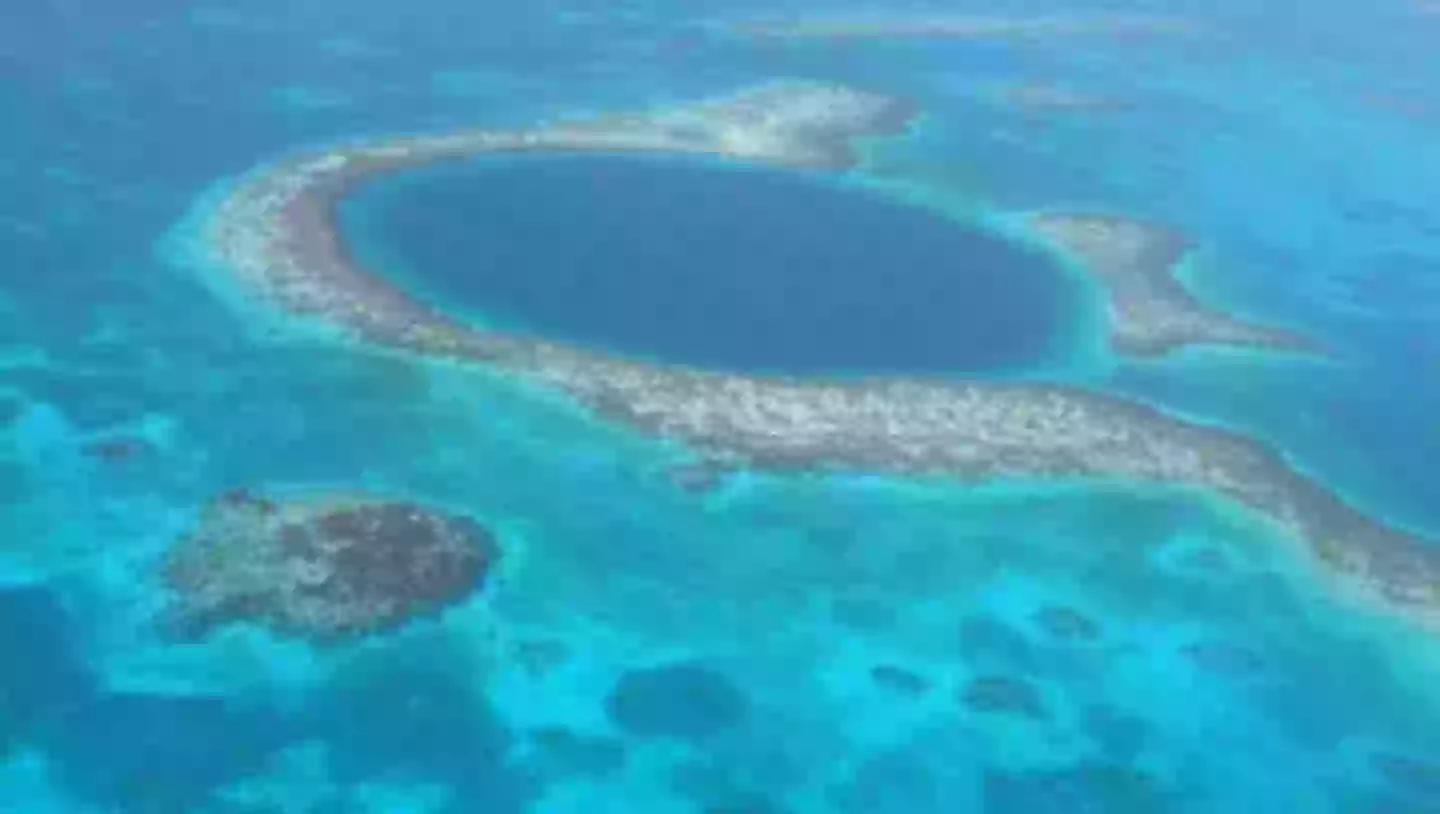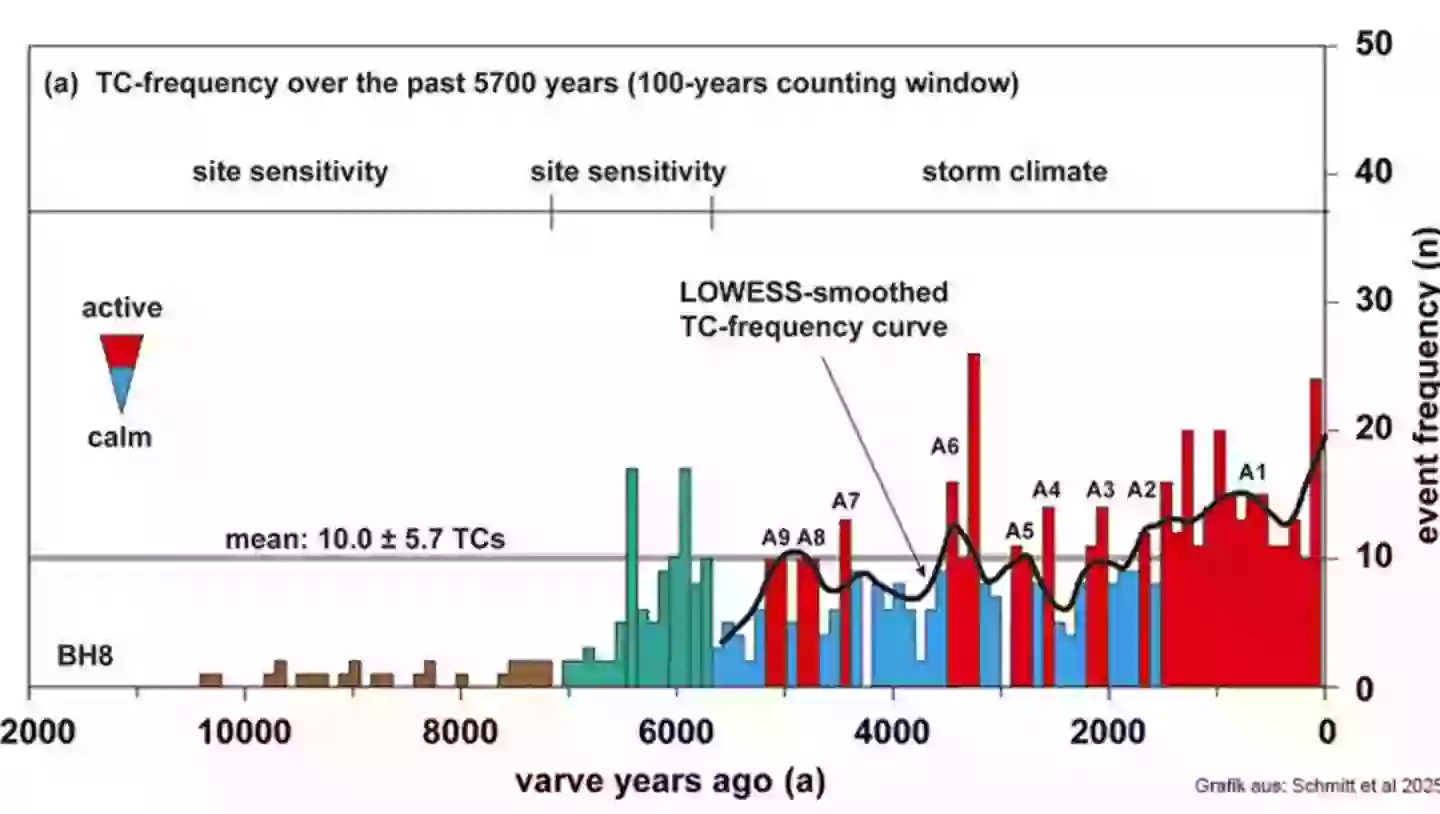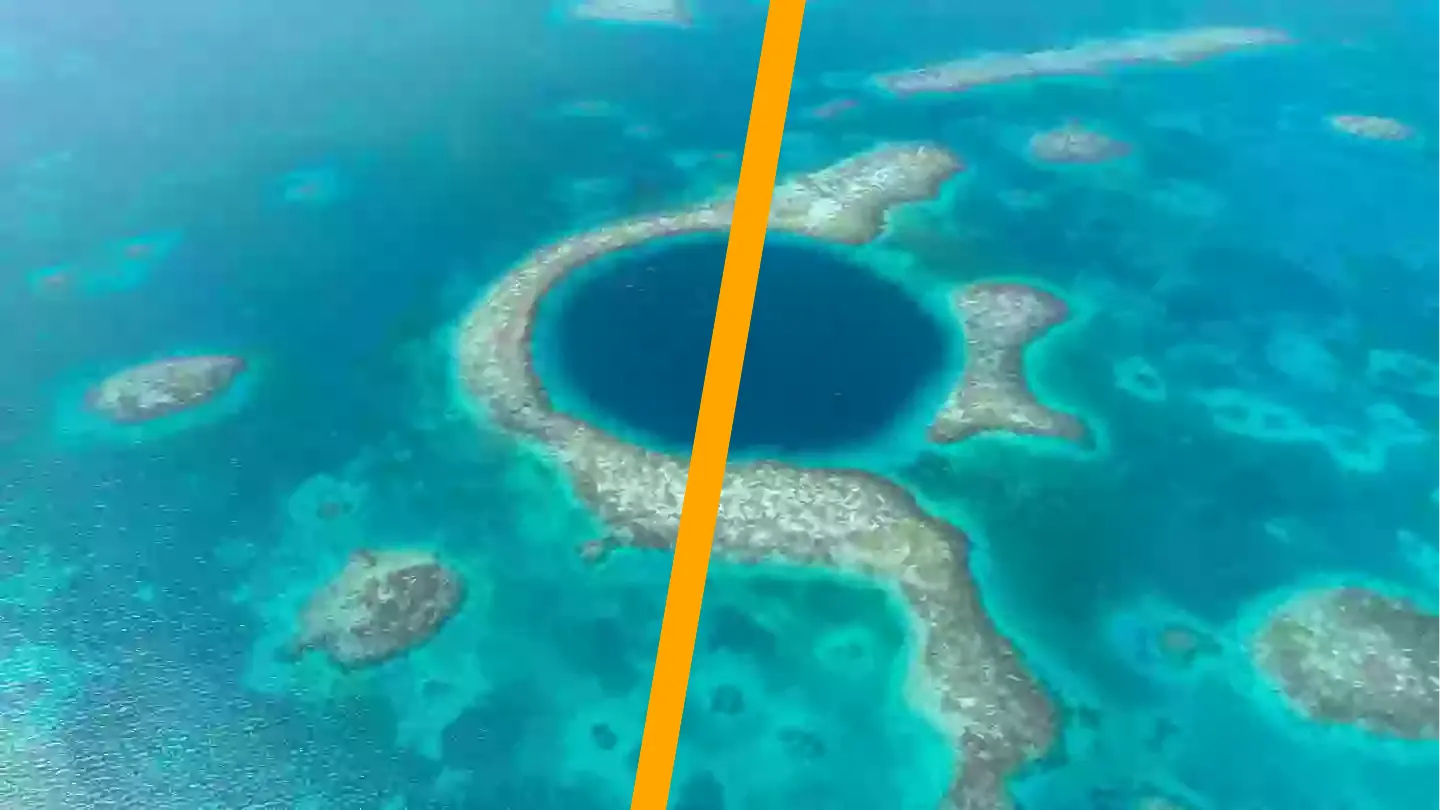Researchers have delved into the depths of Belize’s Great Blue Hole, uncovering a troubling trend in tropical weather patterns.
The Great Blue Hole is a massive marine sinkhole located roughly 43 miles from Belize City.
Covering an area of 760,500 square feet, it is believed by scientists that this UNESCO World Heritage Site began developing around 153,000 years ago.
In recent times, this striking geological formation has attracted recreational scuba divers eager to explore its depths. However, those who have studied it argue that the site is more than a mere tourist spot; it may serve as a warning signal for a potential rise in Caribbean tropical cyclones in the next decade.
A study published on March 14 in the Geology journal, titled ‘An annually resolved 5700-year storm archive reveals drivers of Caribbean cyclone frequency’, highlights this finding.
The researchers extracted a 98-foot sediment core to quantify the tropical cyclones that have occurred over the last 5,700 years.
According to Live Science, each year typically sees the deposition of two layers of fair-weather sediment, allowing researchers to count back the years much like counting tree rings.
By analyzing when storm-event sediment layers occurred, scientists noted that tropical cyclones have been on the rise for the past 5,700 years.

An uptick in these adverse weather events coincided with the Industrial Revolution, a period marked by increased fossil fuel consumption.
“A key finding of our study is that the regional storm frequency has increased continuously since 5,700 years B.P. [before present],” stated Dominik Schmitt, the study’s lead author and a researcher at Goethe University Frankfurt’s Biosedimentology Research Group.
“Remarkably, the frequency of storm landfalls in the study area has been much higher in the last two decades than in the last six millennia — a clear indication of the influence of Modern Global Warming,” Schmitt explained.
Historically, over the past six millennia, The Great Blue Hole has witnessed between four and 16 tropical storms and hurricanes per century, according to Schmitt.
Yet over the last 20 years, evidence shows nine tropical storms have impacted the protected site.

“The nine modern storm layers from the last 20 years indicate that extreme weather events in this region will become much more frequent in the 21st century,” Schmitt added.
The study suggests that the recent increase in tropical storms is likely driven by rising global sea surface temperatures due to climate change.
Additionally, stronger global La Niña events, which are associated with other natural disasters like drought and flooding, could also contribute to this increase.
Alarmingly, experts predict that up to 45 tropical storms, hurricanes, and cyclones could affect the Caribbean by the end of this century.
“This high number is far in excess of what has been the case in the past 5,700 years,” Schmitt remarked.
To contribute to environmental preservation, it is recommended to adopt a more plant-based diet, limit fossil fuel use, and opt for sustainable transportation methods.

